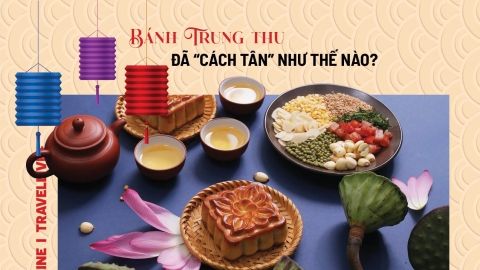Nguyen Khai Trung (born in 1997, Hanoi) is known as the young man who has conquered 63 provinces and cities with more than 100 trips. Recently, he spent three days to explore the Land of a Million Elephants.

Nguyen Khai Trung took a three-day trip to Laos to explore the two northeastern provinces of Hua Phan and Xieng Khouang.
3 days exploring the land of a million elephants
On this trip, Khai Trung spent all his time exploring the two northeastern provinces of Laos, Houaphanh and Xiengkhoang. These two locations are considered closest to the Vietnam border, have famous historical sites and especially these areas do not have too many tourists, suitable for a trip to experience the peaceful life in Laos.
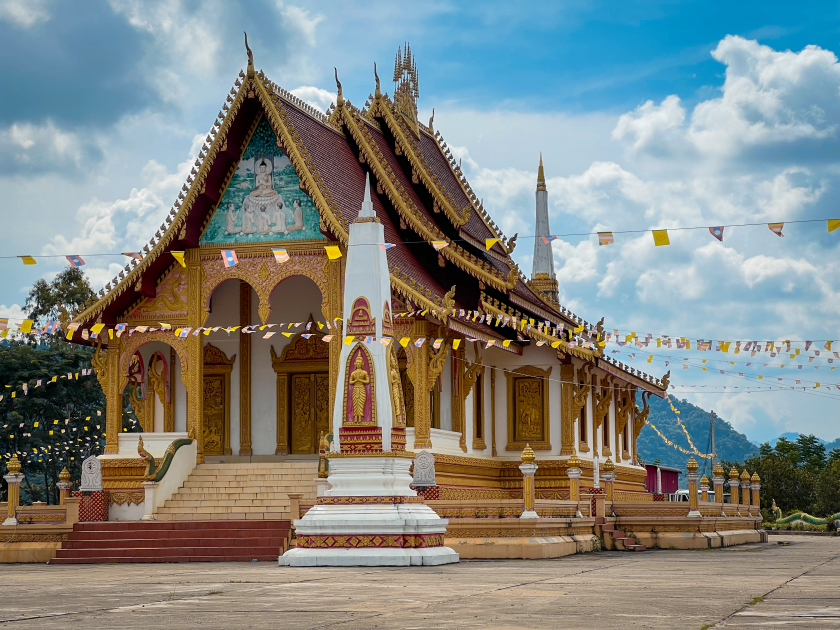
Laos owns many ancient temples that not only have unique architectural art but also have great spiritual value.
The Hua Phan and Xieng Khouang areas were formerly part of the Bon Mang kingdom. This land was once dominated and contested by many neighboring countries such as Dai Viet, Lan Xang, Siam and finally France. Through many ups and downs, until now, the historical sites here are still attractive to tourists as well as domestic and foreign researchers to experience and explore.
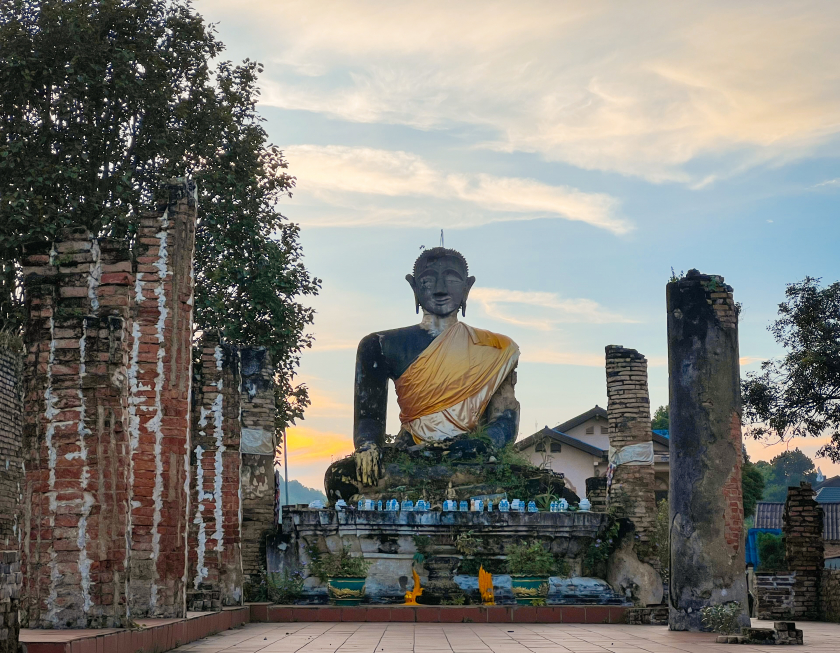
Buddha statue at Wat Phia Wat temple
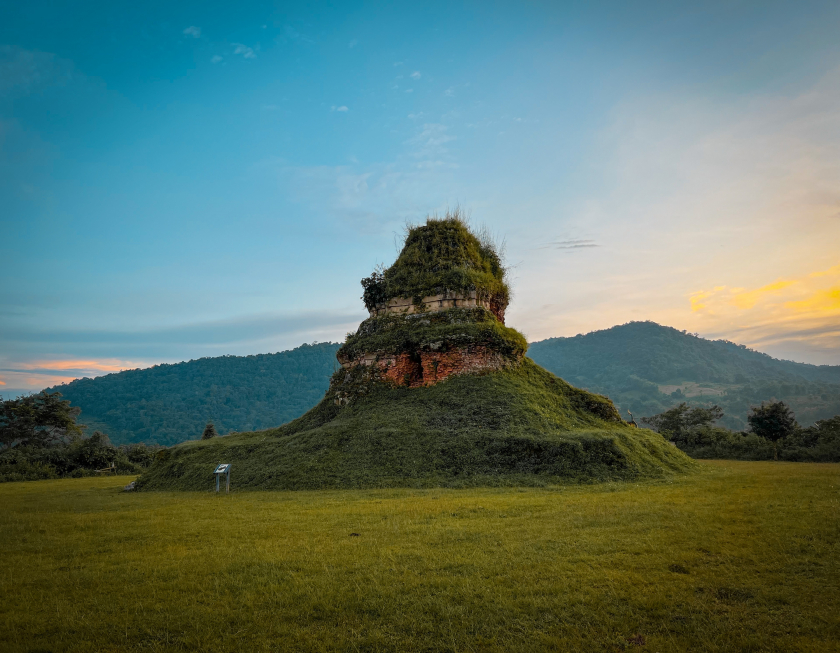
That Chomphet
Not only that, these two provinces had to endure many US air raids to destroy the Pathet Lao and prevent North Vietnam's logistics from supplying the South via the Ho Chi Minh trail. Therefore, there are many bases, tunnels, bomb craters... Not only Lao people but also Vietnamese people should visit to look back at those fierce war years.
When asked by Travellive about the places Vietnamese tourists must visit when setting foot in these two provinces of Laos, Khai Trung gave 4 places not to be missed: Plain of Jars, Muong Khun, Vieng Xay Cave, Sam Neua.
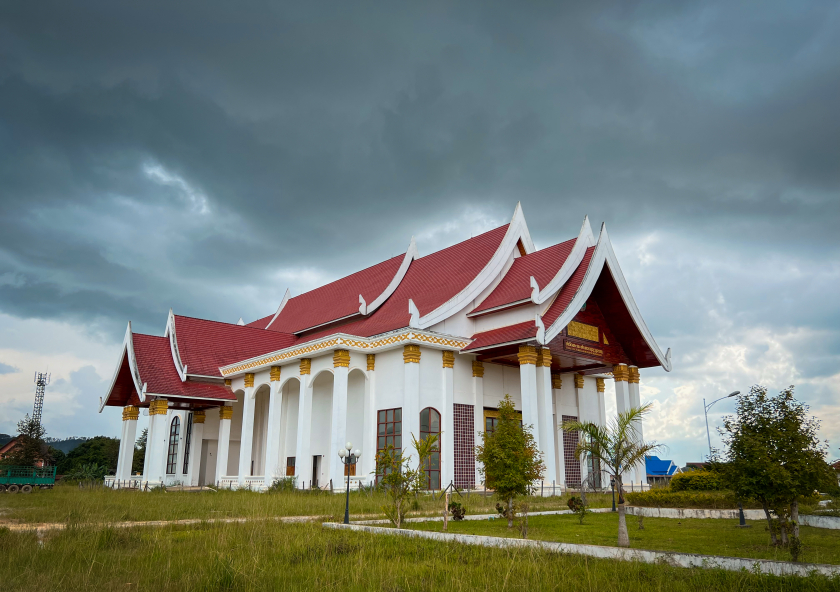
Xieng Khouang Provincial Museum
The first, most famous and oldest place is the Plain of Jars. Dating back more than 2,000 years, the Plain of Jars left him overwhelmed by its scale and size. This is Laos' third UNESCO World Heritage Site, consisting of thousands of stone jars scattered along the valleys of the Xieng Khouang Plateau. No one knows how they were made, how long they have been there, and what they were used for. The best time to visit this place is in the late afternoon, when the sunset makes the jars stand out even more among the rolling grasslands.
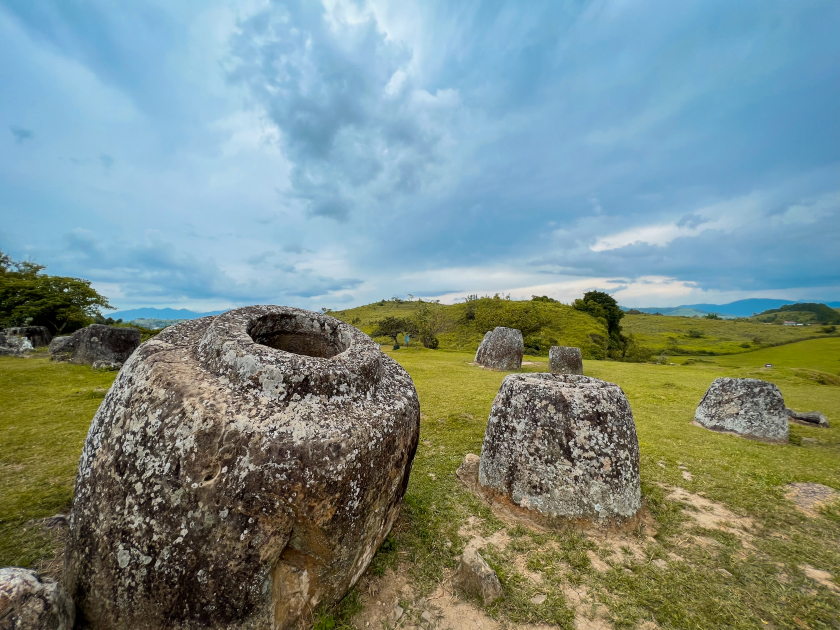
Plain of Jars dating back 2,000 years
The second place that Khai Trung suggested to visit is Muong Khun - the cultural cradle of Xieng Khouang province. It is one of the oldest localities located in the North of Laos. Muong Khun is famous for being a land containing vestiges of civilization with high cultural and historical values, once the capital of 23 chiefs of ancient Lao tribes. Up to now, the historical sites here are still attractive to tourists as well as domestic and foreign researchers to experience and explore. Notable are Phiavat Pagoda, Phoun Tower, Chomphet Tower...
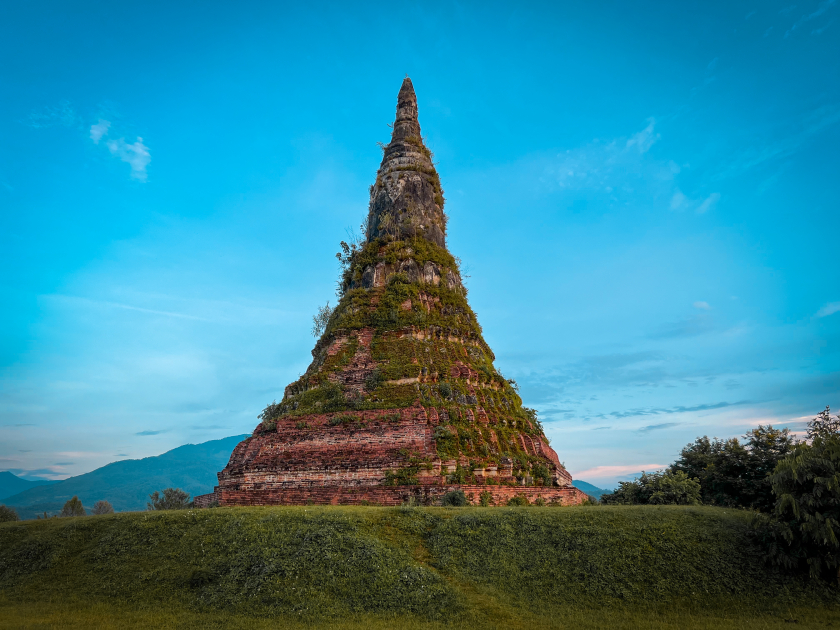
That Foun is an extremely attractive cultural tourist destination in Laos. Lao people say that this is where the Buddha's remains are buried. A truly sacred place that you should not miss.
The third site is Vieng Xay Cave, a system of nearly 500 caves. During the war, this was the command center of the Pathet Lao revolutionary movement from 1964 to 1975, where many important military meetings took place and was also a hiding place for revolutionary soldiers against American airstrikes during the Vietnam War. With a capacity of about 23,000 people and a system of shops, printing houses, schools and hospitals during the war, this cave system has always been the pride of the Lao people.

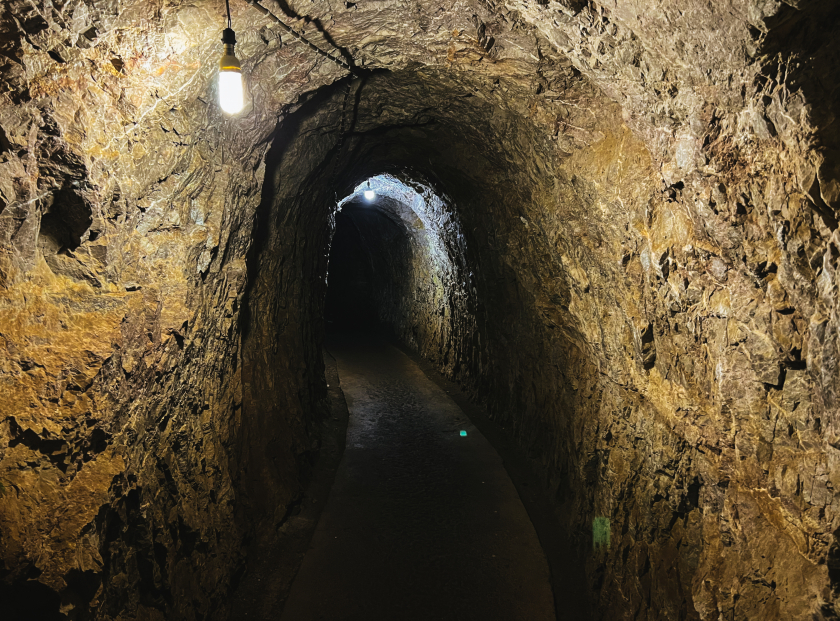
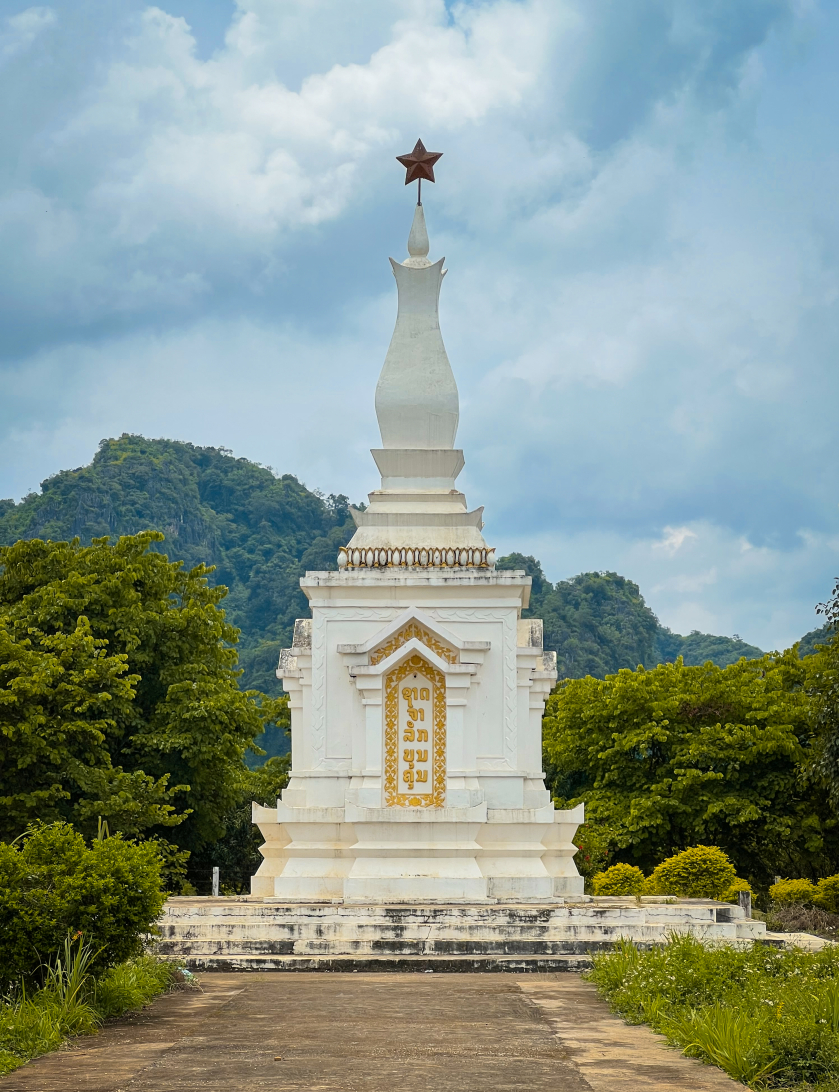
Vieng Xay is especially famous for its system of nearly 500 caves.
Finally, Sam Neua, a place mentioned in the poem Tay Tien:
“Who went to Tay Tien that spring?
The soul returns to Sam Nua and never goes downstream.
This is the political and administrative center of Hua Phan province. Sam Neua and Vieng Xay are two special places of the Lao revolution. The small, peaceful town with cool weather, fresh air, and houses on all sides makes Khai Trung immediately think of Da Lat in Vietnam. If you visit this place, try driving around Sam Neua to see life as if it were "slowed down" with the peaceful atmosphere of the people's lives here.

Bomb shells along the road

Sam Neua is the political and administrative center of Hua Phan province.
In addition, Khai Trung offers 4 great experiences worth trying when visiting Laos. In a country with a rich and diverse culture like Laos, the first thing to do after arriving in this land is to enjoy the local cuisine.
Not only does it have fresh air and beautiful wild scenery, Sam Neua is also home to a unique cuisine imbued with the local culture. You should try famous Lao specialties such as: Lao sticky rice, Lao pho, Lao beer - considered one of the best beers in Asia.
When coming to Laos, you must visit the traditional markets to fully understand the traditional culture here. Vieng Xay Market, Sam Neua Market, Phonsavan Market are attractive traditional markets in the journey to explore the Northeast of Laos. When visiting the markets, tourists will learn about the customs, habits, and culture of the Lao people, and can also buy Lao specialties.
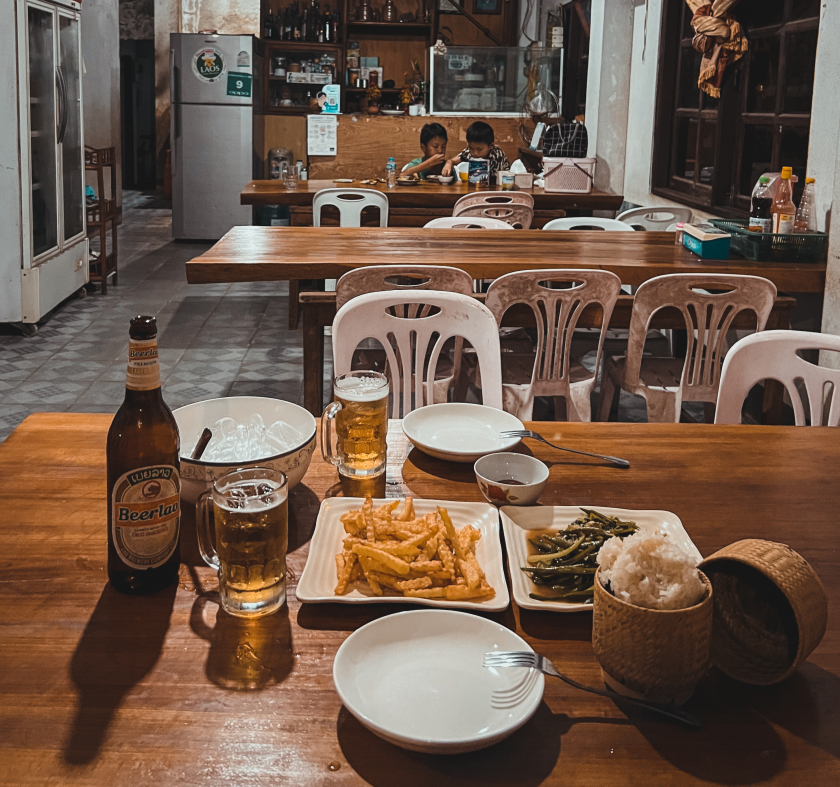
Beer Lao is considered one of the best beers in Asia.
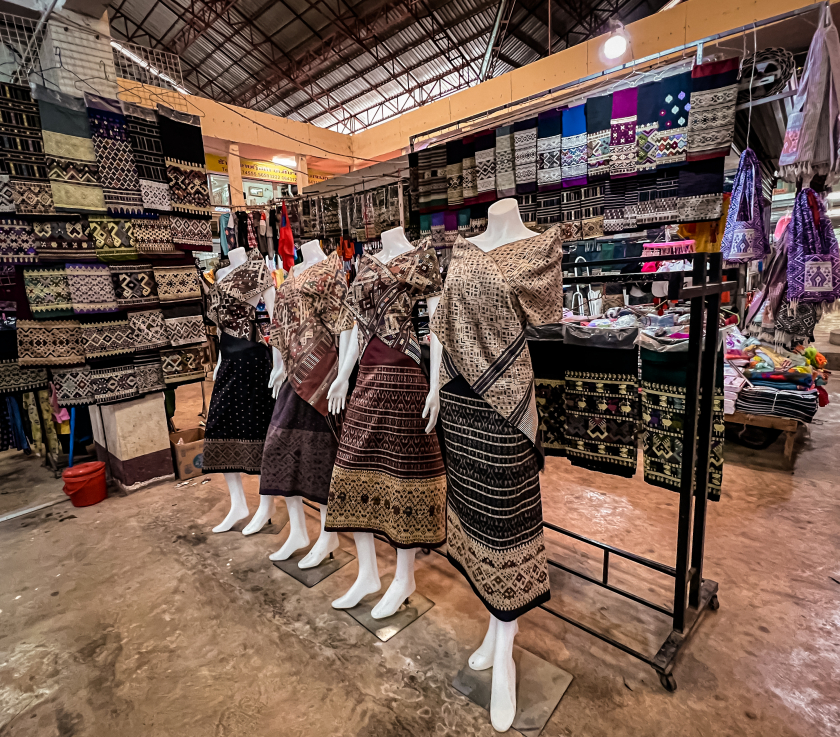
Laos has many traditional markets where visitors can explore culture and customs.
A Buddhist country like Laos certainly cannot lack impressive and sacred temples. Khai Trung believes that Buddhism is considered the national religion in Laos. Therefore, coming to Laos is also an opportunity for you to admire and explore beautiful and sacred temples. Wat Si Bun Hueang and Wat Phoxai Sanaram are two temples you should visit and worship Buddha in Sam Neua.
And experiencing the dangerous mountain passes is an adventurous choice but also worth trying when conquering in Laos. With the terrain of high mountains strongly divided, driving through roads with many sharp turns, uphill and downhill will be a memorable adventurous experience when coming to Laos.
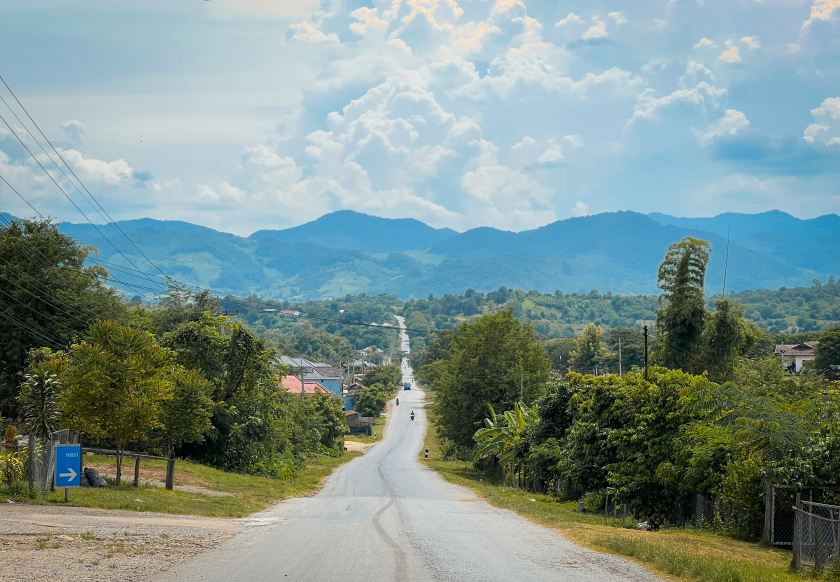
With only 2 northeastern provinces of Laos, the time is short and not much to go but it is enough to see new things compared to famous places like Luang Prabang and Vientiane.
On the way from Hua Phan to Xieng Khouang, Khai Trung had the opportunity to admire the majestic mountain scenery, rolling plateaus and vast valleys. Or when passing through villages nestled in the middle of rice fields, he had to exclaim because of the picturesque beauty.
“However, there are many bumpy roads with potholes that cause people and vehicles to jolt. Facing these difficulties, I feel very tired, but the passion and the feeling of conquering this beautiful road makes me overcome the long distance to continue the journey,” said Nguyen Khai Trung.
The difficulty that Khai Trung encountered during the trip was the language barrier. English is not common in this area, and Vietnamese is only occasionally spoken by a few Lao people.
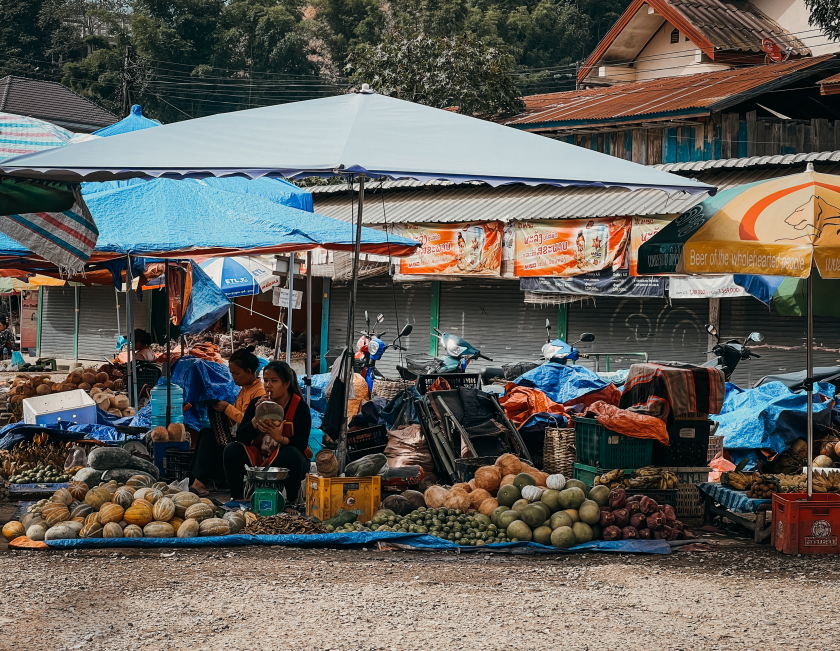
Lao people at the local market
First, when entering a restaurant or hotel, Khai Trung always asks them if they can speak Vietnamese or English. If they can't speak, he will use body language, gestures, and eyes to express his wishes. If they still don't understand, he will use Google Translate. Lao people are very gentle and easy-going, they are always patient to listen, so after a while, both sides understand each other.
“The funniest thing was when I went to each cafe and ordered a bottle of water but wanted them to give me a glass of ice, I looked up pictures of a glass and a bowl of ice water to help them understand,” Khai Trung said about a memorable memory of the trip.
Pocket tips for Vietnamese visitors to Laos for the first time
To have a perfect trip, Nguyen Khai Trung shared some tips for Vietnamese tourists when visiting this Land of a Million Elephants.
Khai Trung said: “You should proactively buy a Lao sim card to have 3G for convenient route searching and translation. I only used international roaming and registered for the Internet but had an error that prevented me from accessing it, making communication difficult. However, this small problem gave me many unforgettable experiences. Thanks to my diligence in listening and communicating with Lao people, I learned some common sentences and how to say prices!”
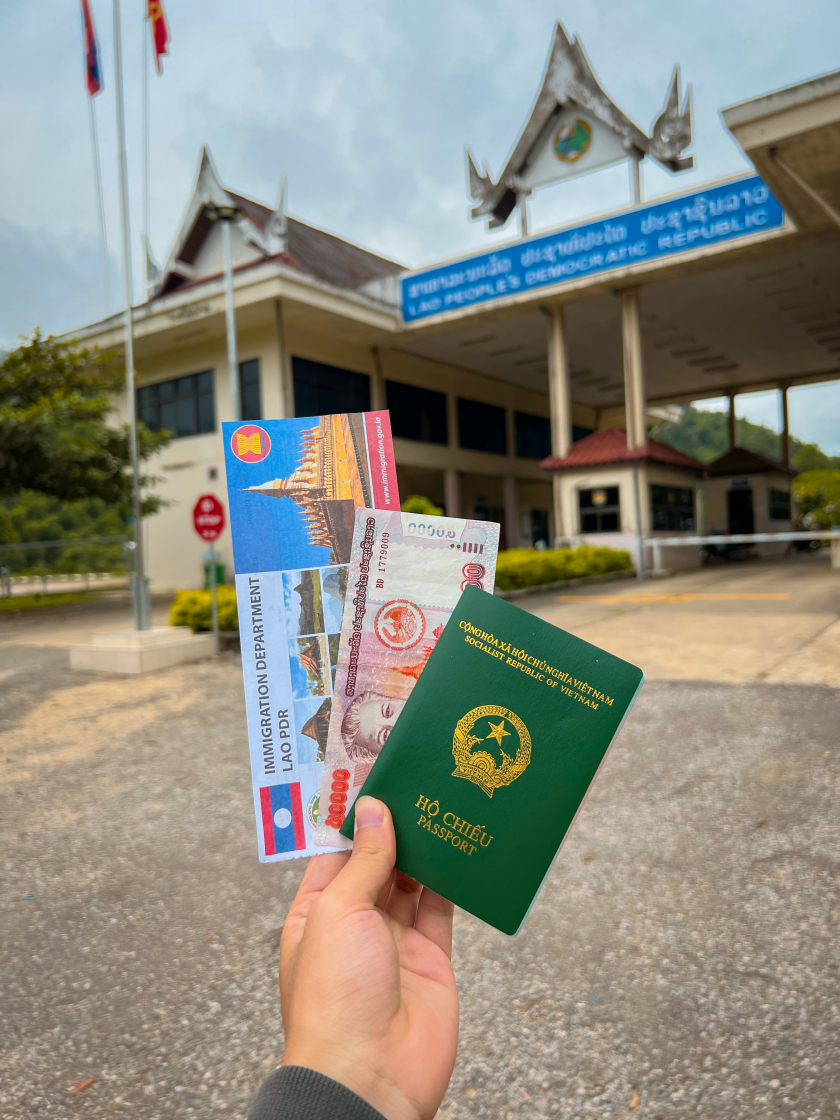
As long as you have complete documents (passport, vehicle registration) and pay a fee, the border gates will facilitate your passage to Laos.
This was also the first time Khai Trung rode a motorbike to Laos, so before going, he was worried about the procedures for bringing the motorbike across the border, traffic police issues, deserted roads so he had to maintain the motorbike... Another piece of advice is to always stay calm on the way to solve all problems in a foreign land.
Regarding immigration procedures, it is quite simple. As long as you have all the necessary documents (passport, vehicle registration) and pay a fee, the border gates will facilitate the passage. The easiest border gates for motorbikes to pass through are Na Meo (Thanh Hoa) and Long Sap (Son La). In addition to stamping your passport, customs from both sides will issue you a travel permit that allows you to travel throughout Laos and to any border gate (Khai Trung chose Nam Can border gate, Nghe An). Unlike before, motorbikes were only allowed to travel around the district of that border gate.
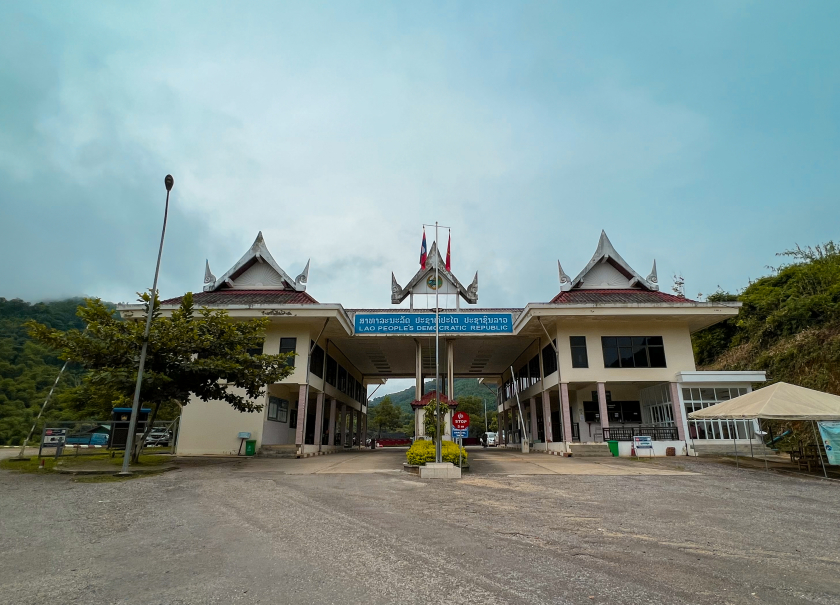
Laos border gate at Na Meo
When you have this road permit, you just drive according to the law there and you will not have any trouble. Traffic police in Laos rarely stand on the road, just pay attention to the section entering and exiting the town center. Moreover, the steep mountain passes in Laos are deserted, so you should maintain your vehicle well and limit driving at night to avoid dangerous situations.
At that time, Laos was running out of petrol, all the petrol stations were closed, so Khai Trung had to buy a large bottle of petrol as a backup and mentally prepared to return home early because there was no petrol. Luckily, when he went, the petrol stations in the city center were open again, the petrol price was a little more expensive than in Vietnam. It was not until the last day before leaving Laos that he used that spare bottle of petrol.

The 1250 km Vietnam - Laos journey brought Khai Trung many wonderful experiences and discovered the most famous heritages in the Northeast region, Laos.
What Khai Trung loves and is most impressed with in Laos is the traffic culture of the people. They drive slowly, look before and behind, do not speed or overtake recklessly, and do not squeeze other vehicles. As long as you ask for the right of way, whether it is a motorbike or a car, they will politely stop or move close to the side of the road to let you pass. Another impressive thing is that Lao people cook delicious food, suitable for Vietnamese taste, and the prices are reasonable, even quite cheap compared to the standard of living in Vietnam.
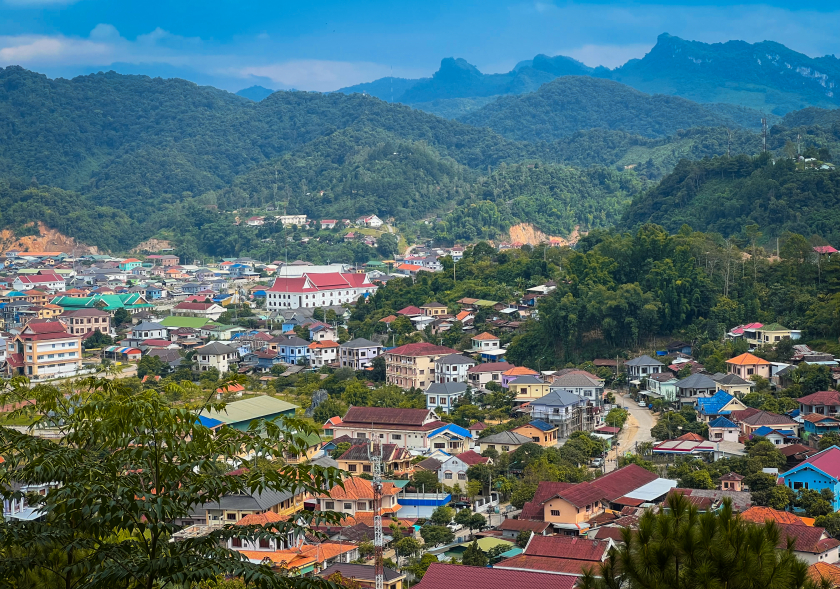
The cool weather, fresh air, and layered houses made Khai Trung immediately think of Da Lat in Vietnam.
The climate of these two areas is different from other areas in Laos, the weather is cool and fresh all year round. Moreover, these two provinces are the least visited by international tourists so there is no crowding or jostling.
“If I have more time, I will stay in Laos for a few more days to experience more about life here. In the near future, I plan to drive to explore other parts of the Land of a Million Elephants such as: Luang Prabang, Vientiane, Vang Vieng, Savannakhet... This will definitely be an interesting journey!”, Khai Trung added.


























